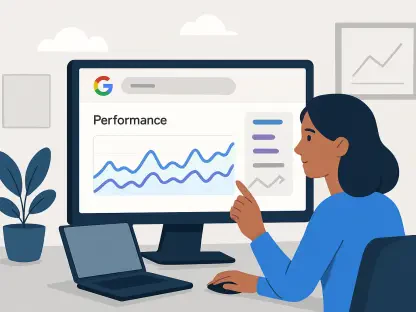Listen to the Article
Today’s world is undoubtedly run by data, and that makes companies around the world turn to Business Intelligence to make better choices, modernize their operations, and get ahead of the competition. The large amount of data out there today means that it is more important than ever that companies use new technologies to turn raw data into good strategies for future actions. With Business Intelligence, organizations can now keep an eye on their different resources and key performance indicators, analyze their actions, and adjust their strategies right away.
Business Intelligence tools can help companies spot new trends and patterns, work efficiently, and make their customers happier and more loyal. By using data visualization and predictive analytics, companies can understand their markets better and even predict future actions and trends. It also helps groups work together better by giving everyone the same information, making sure everyone understands the choices available. These are just some of the reasons why companies that already use these tools tend to improve their decision-making process, boost productivity and profits, and maintain a good position in the market.
By exploring some real benefits of Business Intelligence and analyzing three short case studies, you will learn how these processes can be used to achieve business success.
How Your Business Can Benefit
Improving the Decision-making Process
Business Intelligence provides companies with fast and effective data analysis, helping managers and work groups make smarter choices. Rather than using guesswork or out-of-date information, companies can now use tools to look at past and present data trends, estimate how they will evolve in the future, and reduce risks. Making choices based on real-time information leads to better plans and better results.
Boosting Employees’ Productivity
By automating data collection and reporting, Business Intelligence tools reduce the time workers use to gather and analyze information. This makes them more productive in more important areas and allows businesses to use their resources better. Companies can make their processes smoother, cut out extra steps, and make their workflows better, which saves money and boosts efficiency.
Staying Ahead of the Competition
With Business Intelligence, companies rapidly learn about potential market shifts, buyer habits, and what strategies their competitors are using. This allows organizations to adapt to new market situations, spot fresh opportunities, and keep ahead of the competition. Receiving new and useful data means that businesses can act in advance rather than just respond to different shifts.
Understanding Potential Customers
Business Intelligence tools examine customer data, analyzing what they buy, what they like, and what feedback they provide after the purchase is made. This helps companies modify their offers to better match what buyers want. By knowing what customers are interested in, organizations can make the buying experience better, convert more clients, and sell more.
Boosting Sales and Profits
By analyzing defective strategies and making things run better, Business Intelligence helps organizations cut costs and increase profits. It also helps them discover their best-selling products and most successful strategies, and look for new ways of boosting their sales. With a clearer financial understanding, companies can use their resources better and increase their revenue.
Case-study #1: How Amazon Uses Different Business Intelligence Tools
Amazon uses Business Intelligence tools to streamline its operations in many areas of its business, including product recommendation, inventory, and advertising. Amazon analyzes customer behavior, purchasing history, and browsing using algorithms to customize shopping experiences. For instance, if a customer regularly buys kitchen appliances, Amazon’s suggestion engine presents related products like cookware or cutlery. This data-driven approach not only maximizes customer satisfaction but also boosts sales through related purchases.
Effective management of inventory is another area where Amazon is assisted by Business Intelligence. With a large network of warehouses worldwide, the company uses real-time monitoring and demand forecasting to control stock levels. By analyzing historical sales trends, seasonal cycles, and shifts in the market, Amazon keeps high-demand items in inventory, particularly during peak-demand seasons. This preemptive inventory management minimizes shortages.
In addition, Amazon employs Business Intelligence to segment its diverse customer base to facilitate targeted promotion campaigns. Based on demographics, purchasing behavior, and browsing patterns, Amazon makes offers that appeal to consumer interests.
Case-study #2: How Baylis & Harding Improved Its Decision-making Process
Baylis & Harding, a luxury hand washes and gift sets distributor, utilized Business Intelligence tools to significantly improve its decision-making process. It was experiencing difficulties when it came to providing real-time insight to its executives and managers. With the implementation of the new programs, standard and ad hoc reports could be produced rapidly.
As a result, Baylis & Harding executives and managers now get instant access to critical data, enabling them to make proactive decisions. Personalized dashboards with key performance indicators are also at their disposal, ensuring managers that their teams remain on track without having to rely on IT for tailored reports.
Case-study #3: Netflix Used Bi Tools to Transform Its Businesses
Netflix’s success also originated from its ability to use analytics software to sift through massive amounts of data and make the right choices. In fact, one of the most important uses of analytics at Netflix is for recommendations. By tracking viewers’ habits – what they watch, when and where they watch, and on what device – Netflix provides personalized recommendations based on individual tastes. The company also employs auto-generated personalized thumbnails, selecting images most likely to be of interest to users given their interests.
Other than customization, Netflix also employs data analytics to forecast and promote trending content. By monitoring what users watch, Netflix is aware of what shows are trending and features them in its “Trending Now” section. This analytical capability allows the company to make smart programming decisions, like renewing hit shows or canceling failing ones. Netflix also uses Business Intelligence tools for its content similarity ranking and predictive analysis, creating links between different shows and suggesting the content that users will enjoy the most. All these and other solutions have provided the company with an important competitive advantage, continually improving user experience and fueling growth.
Key Takeaways on the Benefits of Business Intelligence
From toiletries distributors to giant retailers and streaming providers, different companies around the world already use Business Intelligence to drive their success. In a data-driven world, it comes as no surprise that monitoring, analyzing, and effectively using information to improve the decision-making process is an essential competitive advantage for any organization. Using Business Intelligence tools is one of the best ways of achieving this goal — an important plus for most companies.









